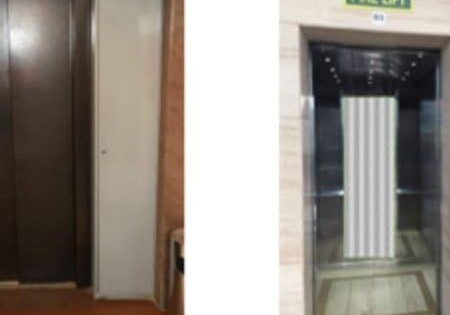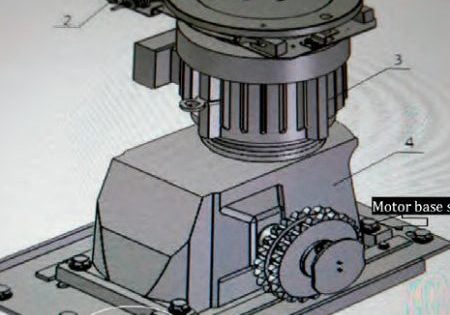The right solution can add cutting-edge technology to both legacy and brand-new elevator systems.
by Marek Loucky
Ongoing changes in telecommunications networks are presenting big challenges for the elevator emergency communication field. In recent years, we have heard the voices announcing that traditional public switched telephone networks (PSTNs) are being replaced by Voice over Internet Protocol (VoIP) technology. Further challenges involve cellular networks, as wireless carriers shift from 2G (GSM) and 3G (UMTS) toward 4G (LTE) systems. Both of these trends are having significant impacts on the design and operation of elevator emergency communication systems (not to mention alarm systems).
The time schedules for GSM, UMTS and legacy PSTN network closures vary from region to region, but considering the overall number of new gateways that will be deployed through the end of 2025, elevator companies have no room for hesitation. As technology and customers’ requirements and expectations naturally evolve, the new solution should be built on modern IP technologies that are highly flexible and can facilitate various changes and add-ons in the future. Nobody wants to buy a solution that will have to be replaced in a few years.
This article identifies the most common-use cases and offers guidance in selecting the most appropriate solution, so passengers won’t be left helpless in case of entrapment.
Fixed-Line Replacement
There are still elevators with communication systems (dialers and audio units) connected directly to the PSTN via analog lines, though the number of these lines declines dramatically every year. These networks are difficult to maintain and don’t provide any advanced functionality or higher sound quality, so it comes as no surprise that the cost of this service is increasing. The question becomes, “What should you do when your telco provider switches off its PSTN networks?” The answer is easy: use an analog cellular gateway. This independent solution offers the following benefits:
- Lower subscription fee
- Advanced services, like video streaming
- Data connectivity
- No hassle with building owners about telco lines
- Faster recovery from disasters
Replacement of the old fixed lines has been achieved
through 2G or 3G gateways so far, but these will be irrelevant soon, and customers will have to go the 4G way. Given the improvement in service, this could be a case of the sooner, the better.
2N® EasyGate IP
2N Telekomunikace supports all 2G, 3G, and 4G networks with its EasyGate IP, the latest generation of the company’s
successful product line. With the EasyGate IP device, the traditional analog cabin communicator (dialer) is connected to the FXS port. The EasyGate IP offers a dual-SIM (subscriber identity module) design for customers in regions that struggle with the availability of mobile networks. In these cases, the primary SIM can be, for example, a global SIM, while the secondary SIM is local from a different carrier. The EasyGate IP will select the network based on signal strength and connection quality. The EasyGate IP is designed to work in demanding environments. Its industrial-style case carries an IP43 rating for spraying water and operates within a wide temperature range: -40°C to +85°C (-40°F to +185°F). It includes a holder for mounting on either a wall or a DIN rail.
With its serial bus RS232, or using input contact for sending customized SMS, and USB-C, the device allows the user to connect different devices. It also has an output relay with normally open (NO) and normally closed (NC) contacts.
Some elevator companies may have many units under service contracts, and for these companies, it’s important to keep up with how their devices are operating — that is, if there are any existing or potential issues. In earlier times, this required physically accessing each elevator. With a large portfolio, this can quickly become very expensive. EasyGate IP offers connectivity to the My2N cloud, a powerful tool that allows the service company to manage, monitor and operate thousands of devices from one place.
The My2N cloud service is designed to be as intuitive and helpful as possible. Technicians and administrators need no special knowledge in VoIP or information technology: just plug in the device, and configuration starts automatically. Once the My2N cloud is connected to all managed devices, it knows all operational parameters, like battery status, network registration and consumed data. Some of its capabilities are:
- Firmware upgrades bring new features and improvements.
- Automatic configuration to remove the risk of configuration mistakes by field technicians Detailed monitoring to receive immediate device status
- Hosted PBX (My2N Session Initiation Protocol [SIP] proxy) to put everything under the administrator’s control from one location
- Connectivity to any other third-party VoIP provider
- Bulk changes eliminate onsite visits, saving technicians’ time
- Partner application programming interface for easy integrations with customers’ monitoring systems
My2N cloud is not a requirement to use the devices described in this article, as all can be configured to work in a standalone mode. All of them include a web graphical user interface for simple local configuration, so no special tools are needed for setup. However, My2N cloud can offer ease, a reduction of configuration errors, faster event response and time savings.
The biggest advantage of this product, however, lies in how it processes calls and transfers elevator protocols (like P100). 2N has converted communication to VoIP, thus avoiding the distortion of dual-tone multifrequency (DTMF). This is essential for correct functioning, which can hardly be achieved in a different way, such as through voice over long-term evolution (VoLTE) (ELEVATOR WORLD, December 2019).
Retrofit
2N’s products for retrofit include the EasyGate IP and the 2N Lift1, a traditional analog unit for two-way communication in single-shaft installations powered from the gateway, so no separate power supply is needed. It includes several configuration profiles for easy changes to device behavior, and up to six numbers for alarm calls. Lift1 comes in various modifications according to specific uses:
- Car operating panel (COP): board installed behind car panel
- Compact: surface installation inside the cabin, with or without button
- Flush-mount: COP mounted on metal plate for flush installation, with or without button
- Top of car (TOC): mounted in robust metal housing for installation on TOC
Lift1 installation is possible to complete with various accessories, like induction loop, blocking module, amplifier or voice station switch for extra audio units on top of and under the car.
Futureproof IP Solution
2N Telekomunikace is part of Axis Communications and aims to be a trendsetter in many related industries, like IP intercoms, IP audio and IP access control. As a private branch exchange (PBX) producer, 2N has also undergone the transition from traditional analog and digital telephony to VoIP. Such a change appears to be inevitable in the elevator industry, as well, because it makes sense from an operational, technical and business point of view.
An emergency communication system consists of three principal parts:
- Customer’s premises: 2N offers the necessary hardware for VoIP.
Communication network: 2N offers VoIP services via the My2N cloud or through interconnection to third-party VoIP providers.
Service center: must be equipped with VoIP terminals.
There is no need for other media gateways, converters or workarounds that preserve the analog technologies of the 19th and 20th centuries and cause unreliable DTMF transmission.
| VoLTE | VoIP via 4G | |
| Voice transfer | yes | yes |
| DTMF | problematic | yes |
| Signaling info | separate channel | together with voice |
| Configuration complexity | carrier-specific | universal |
2N LiftIP
Lift IP represents a new-generation VoIP cabin communicator built on top of the same platform as the 2N IP Intercom family and equipped with auto-dialer functionality. The underlying software is optimized and tested in many installations and integrates with the My2N cloud and its services.
New LiftIP hardware keeps the same form factor as the analog Lift1, which means that COP and TOC units will fit within the same space (flush panels with or without button).
A compact unit for surface installation is under development and will be launched later.
2N LiftGate
The purpose of the 2N LiftGate is to provide data connectivity for IP devices in or on the elevator cabin. It is basically an LTE router customized for the elevator environment and compliant with strict elevator norms. It uses LTE data (dual SIM is also supported) as its primary connectivity method, but there is also wide-area network port that facilitates backup connectivity via the customer’s network.
LiftGate is equipped with two output relays, two inputs, two antennas and a four-port switch for connecting other IP devices, such as a machine-room phone or lift controllers with Ethernet support. Batteries provide backup for at least two shafts.
LiftGate also eliminates obstacles that have, in the past, impeded the connection of cabin devices to VoIP. It accomplishes this by using DSL technology to carry Ethernet over two-wire systems, which means that a pure IP solution can be installed in older elevators as easily as in brand-new ones, because there is no need to change the traveling cable. The two-wire system delivers Ethernet to a small car-top box called the LiftGate cabin switch, which has four Ethernet ports (two are power over Ethernet [PoE]), plus a 12-V output for emergency lighting.
This technology allows various IP devices to be installed in the lift cabin. Typical configurations use LiftIP as the cabin communicator (preferably the Axis IP camera, due to regulatory requirements in the U.S.) and the 2N IP Access unit that allows passengers to choose certain floors after swiping a radio frequency identification card, or near-field communication or Bluetooth activation by smartphone. A port can even be used for a lift-monitoring system.
LiftGate connects to My2N cloud the same way EasyGate does, so all advantages of remote configuration, auto provisioning, SIP proxy, one-click installation and more are valid for LiftGate and LiftIP.
Get more of Elevator World. Sign up for our free e-newsletter.









